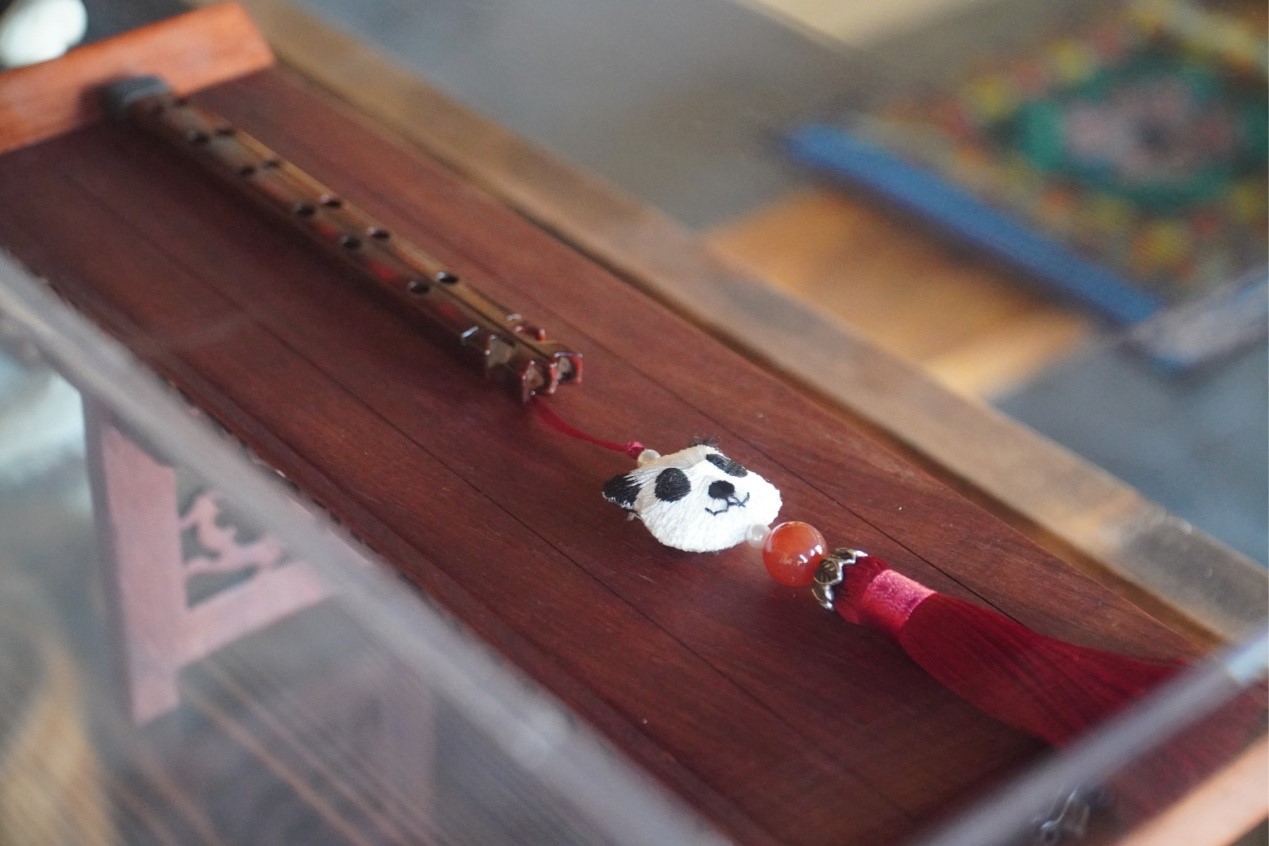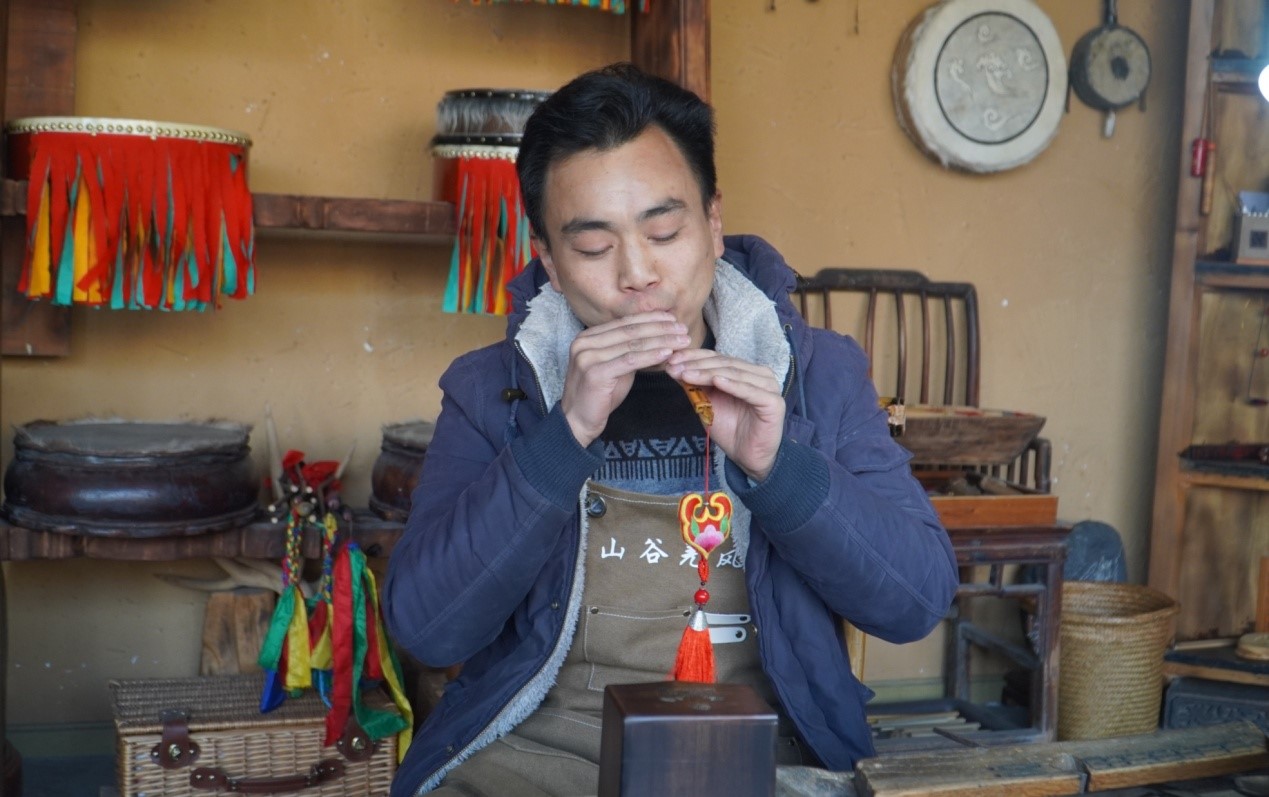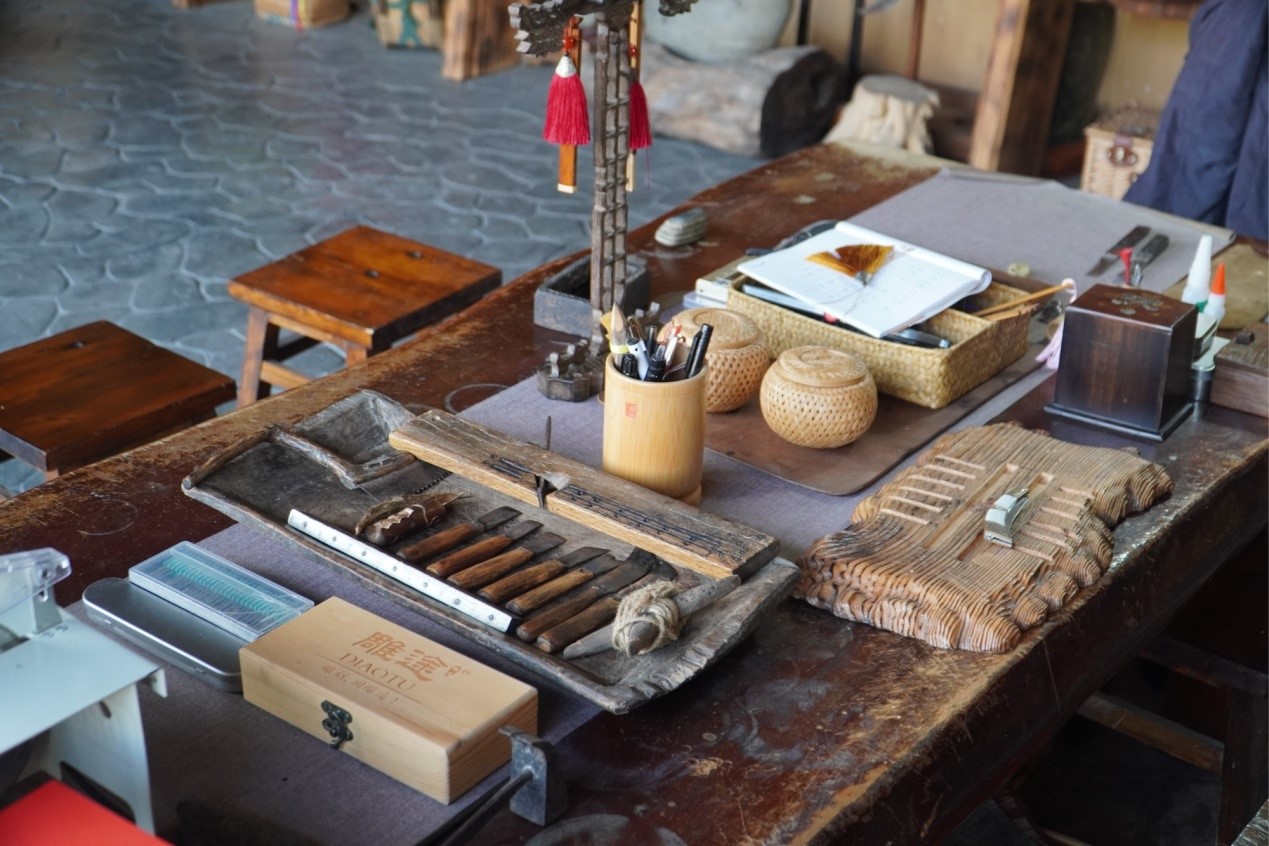Ancient Chinese Qiang flute gains popularity
From:People's Daily OnlineAuthor: 2024-03-08 15:05
The Qiang flute is a key musical instrument of China's Qiang ethnic group. It has remained popular for over 2,000 years, sustained by the dedication and hard work of those who preserve and teach this cultural heritage.
Legend has it that the first Qiang flute was a whistle fashioned from the first joint of an eagle's wings. When some Qiang people migrated from the grasslands of northwest China to areas along the Minjiang River, the flute evolved. Qiang artisans started making the instrument from bamboo instead of bone, and they increased the number of holes from fewer to four or five.

The Qiang flute is the representative musical instrument of the Qiang ethnic group in China. (China National Radio/Chang Sirong)
Zhao Kun, an inheritor of the Qiang flute performance and crafting traditions, is one of the key artisans contributing significantly to the preservation and passing down of this ancient instrument, designated as China's national-level intangible cultural heritage.
Growing up listening to his elders play the Qiang flute in Maoxian county, southwest China's Sichuan Province, Zhao began his journey as an apprentice to learn both how to play and make the Qiang flute during middle school.
The unassuming Qiang flute hides its intricate and meticulous crafting process. Each flute is made through a detailed, 18-step process, including material gathering, bamboo processing, and reed tuning, all done by hand.
Due to its durability, flexibility, and low moisture content, prime arrow bamboo with uniform nodes, slender stems, and consistent thickness at both ends is usually selected for making the Qiang flute. Raw materials for different parts of the instrument are collected at different times of the year.
The complexity of the flute-making process makes the inheritance of the craft extremely important.

Zhao Kun, an inheritor of Qiang flute performance and making techniques, plays the instrument. (China National Radio/Chang Sirong)
Zhao has always crafted Qiang flutes with traditional raw materials and techniques rather than cost-saving plastic. To continuously improve the instrument, he went to Beichuan Qiang Autonomous County, Sichuan Province, to learn Shuimoqi, a traditional lacquerware craft of the Qiang ethnic group, from an intangible cultural heritage inheritor named Zhu Hongzhi.
Today, the Qiang flute has transcended its role as a traditional wind instrument; it has also become a valued collectible item, gaining new popularity and interest.
Despite having calloused and cracked fingers and palms from making Qiang flutes year-round, the artisans cannot wear gloves. According to Zhao, they need to touch and feel the materials with their hands to ensure the instrument's high quality.

Photo shows various tools for making a Qiang flute, the representative musical instrument of the Qiang ethnic group in China. (China National Radio/Chang Sirong)
"The 2,000-year legacy cannot end with us. Only by protecting and carrying forward the heritage from generation to generation can the Qiang flute reach a bigger stage," Zhao noted.
Edit:董丽娜
The copyright of the article and the picture belongs to the original author. If there is any infringement, please contact to delete it